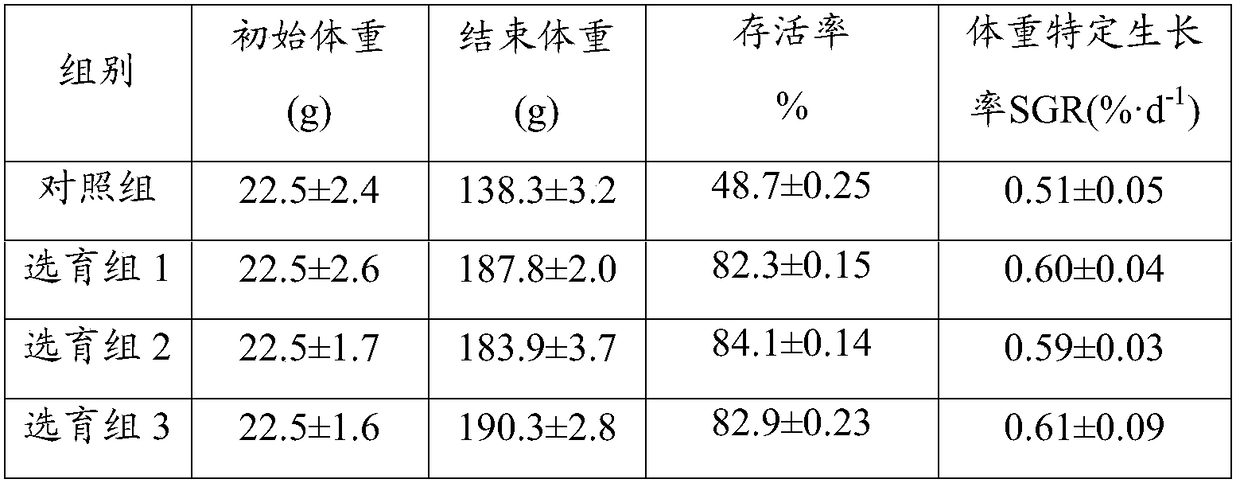A kind of breeding method of fast-growing and stress-resistant sea cucumber new strain
A new strain of sea cucumber, which is applied in the fields of application, fish farming, animal husbandry, etc., can solve the problems of high input cost of sea cucumber breeding, poor ability of large-scale seed production, and unstable genetic effect, etc., to reduce the cost of breeding. Cost, accelerated breeding progress, strong resistance to stress
- Summary
- Abstract
- Description
- Claims
- Application Information
AI Technical Summary
Problems solved by technology
Method used
Image
Examples
Embodiment 1
[0044] 1. Select high-quality wild female ginseng from Yantai region and male ginseng from Weihai region as parents for temperature-controlled domestication and maturation promotion. The number of parents caught for the first time is 450, with an individual weight of more than 200g / head. The domestication water temperature is 18.5°C-19°C .
[0045] After 12 days, individuals with normal food intake and activities and who have not released sperm eggs were selected as parents to continue to raise the temperature to promote maturation. The average daily water temperature was increased by 0.5°C, and it was maintained at 20.5°C.
[0046] 2. After 6 days of cultivation, the egg-laying method is induced by warming up and drying in the shade and running water. The water temperature for spawning is 22°C-24°C, the water temperature for hatching is 24°C-25°C, and the water temperature for planktonic larvae cultivation is 25°C-27°C.
PUM
 Login to View More
Login to View More Abstract
Description
Claims
Application Information
 Login to View More
Login to View More - R&D Engineer
- R&D Manager
- IP Professional
- Industry Leading Data Capabilities
- Powerful AI technology
- Patent DNA Extraction
Browse by: Latest US Patents, China's latest patents, Technical Efficacy Thesaurus, Application Domain, Technology Topic, Popular Technical Reports.
© 2024 PatSnap. All rights reserved.Legal|Privacy policy|Modern Slavery Act Transparency Statement|Sitemap|About US| Contact US: help@patsnap.com








